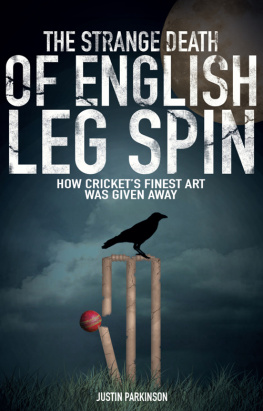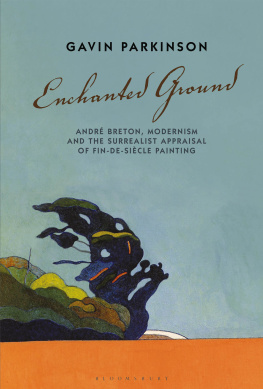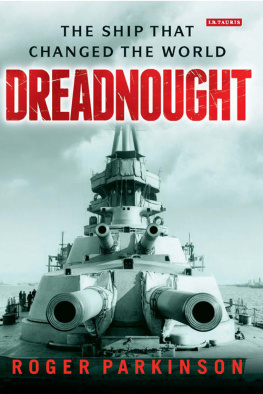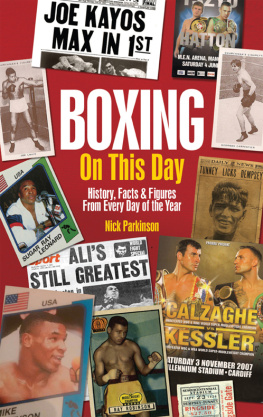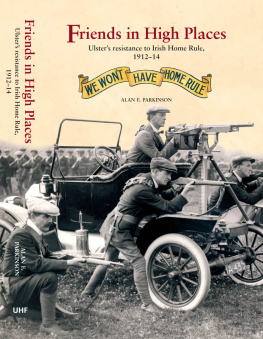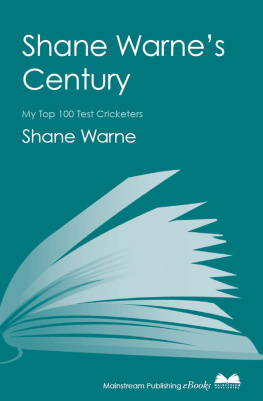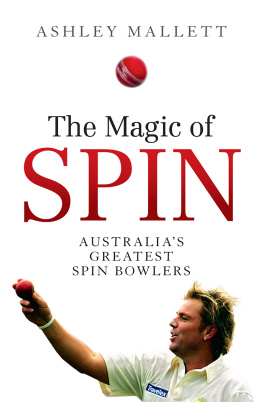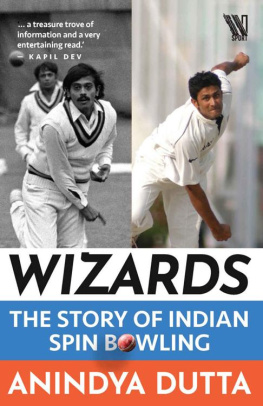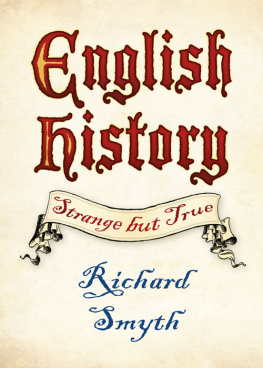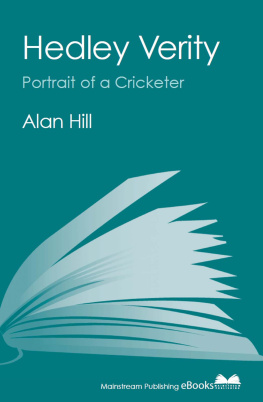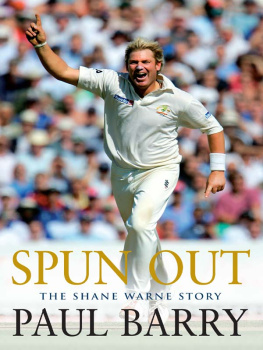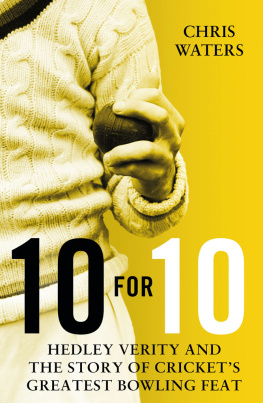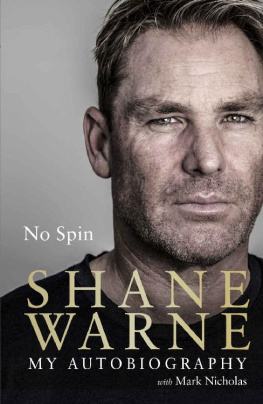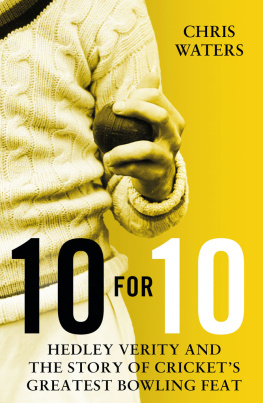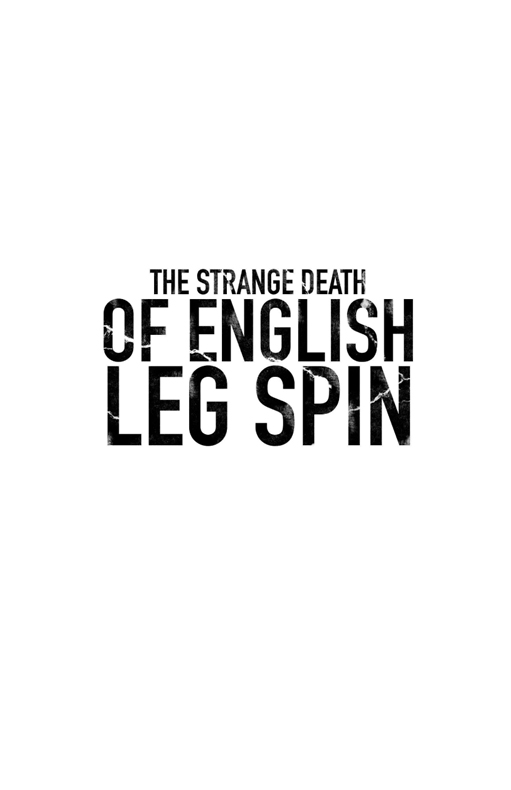First published by Pitch Publishing, 2015
Pitch Publishing
A2 Yeoman Gate
Yeoman Way
Durrington
BN13 3QZ
www.pitchpublishing.co.uk
Justin Parkinson, 2015
All rights reserved under International and Pan-American Copyright Conventions. By payment of the required fees, you have been granted the non-exclusive, non-transferable right to access and read the text of this e-book on-screen. No part of this text may be reproduced, transmitted, downloaded, decompiled, reverse-engineered, or stored in or introduced into any information storage and retrieval system, in any form or by any means, whether electronic or mechanical, now known or hereinafter invented, without the express written permission of the Publisher.
A CIP catalogue record is available for this book from the British Library
Print ISBN 978 178531-029-4
eBook ISBN: 978-1-78531-083-6
--
Ebook Conversion by www.eBookPartnership.com
Contents
For Caroline, Iris, Nora
and Grandpa Jack,
and Richie Benaud,
who taught me to love the game
Acknowledgements
F IRST of all I have to thank Roger Packham for poring over my manuscript, searching for errors and suggesting changes. His enormous knowledge of cricket truly is a godsend, as are his enthusiasm and attention to detail.
My good friend Bruce Talbot, an author and chinaman bowler of some repute himself, and cricket literature expert Martin Chandler also gave my words the once-over, which is greatly appreciated. Another good friend, barrister, historian and author Ben Peers, checked out the manuscript.
Paul and Jane Camillin at Pitch Publishing have, as ever, been wonderfully supportive. Thanks also to Duncan Olner and Derek Hammond for their work on the design and presentation of the book, and to Dean Rockett and Graham Hales.
Roger Manns help with the photographs was invaluable, as were his insights on much of the period covered and on the intricacies of coaching. Nicholas Sharpe gave access to his extensive picture collection, as well as his good advice. My spin bowling protege (pity him) and photographer James Stan Boardman helped me out as usual.
The writing of Strange Death has allowed me to meet several of the best English leg-spinners since the Second World War. Authorship, like leg spin, can be a lonely vocation, so it was a pleasure to discuss cricket with Bob Barber, Robin Hobbs, Warwick Tidy, Andy Clarke, Ian Salisbury, Michael Munday and Matthew Gitsham. They described candidly the difficulties and joys of their art (in their hands it deserves this epithet). They are heroes. England great Ted Dexter kindly took time out to discuss leg spin and his time as chairman of selectors. They were all every bit as entertaining and intelligent as I had expected.
Alastair Peebles and Richard Robins provided insights into their fathers who, I hope, would have found this book worthwhile.
Peter Philpott, probably the worlds most esteemed coach and a living god of the pedagogy of leg spin, was a joy to talk to.
Jamie Barker was fascinating on the psychology of leg spin, while Paul Lawrence gave important detail on the life and coaching philosophy of Terry Jenner. Chris Wood of the ECB was informative and friendly, as was Karen Maxwell of the Institute of Groundsmanship.
Bill Parkinson, Nick Clarke, Jon Filby and David Bowden helped put me in touch with Robin Hobbs, Andy Clarke and Ted Dexter. Patrick Ferriday allowed me access to his library. We also had some fun conversations at Small Batch Coffee in Hove.
My visit to the home of David Frith was nothing less than a pilgrimage. He was a kind host and his suggestions were most welcome. Like all good leggies, David not only knows cricket but feels it. How fortunate aspiring cricket writers are to have him to consult.
Neil Robinson and Robert Curphey welcomed me to the MCC library, where I spent many happy hours. The staff at the British Library were helpful, as was Vastiana Belfon at St Mary-at-Hill Church. Once again, Rob Boddie of Sussex County Cricket Clubs museum offered access to its archive.
The Guardians esteemed theatre critic Michael Billington was encouraging and it was good to gauge his views on his boyhood hero, Eric Hollies. I had a splendid few minutes talking to John Mullan, head of English at UCL, about his love of leg spin when we met by chance in the green room at BBC World and enjoyed his follow-up e-mail on the subject. It turned out we were both self-taught and of a similar standard!
Steve Hollis of the Brighton Evening Argus, a fellow leg-spinner, was a useful sounding board for my ideas and Matt Thacker, by publishing a leg spin-related article in The Nightwatchman magazine and asking me to speak about it at the Cheltenham Literary Festival, allowed me to clarify my ideas. Sue Inglish and Alex Hunt, my bosses at the BBC, were also supportive.
Most of all I want to thank my family Caroline, Iris and Nora for being so understanding whenever I disappeared to the study for a couple of hours to beaver away on writing some chapter or other. I love you all.
Ill never get to meet the likes of Bernard Bosanquet, SF Barnes, Tich Freeman, Ian Peebles, Walter Robins, Father Marriott, Eric Hollies, Roly Jenkins and so many others, but their writings and the interviews they gave were invaluable sources. They deserve to be remembered.
Introduction
S HANE Warne was almost spent. Australia were about to lose. It was at Trent Bridge in that crazy, dreamlike summer of 2005. Warne was fighting like hell to ensure the Ashes stayed with his team. Through graft, guile and explosive power he managed eight wickets in the match. But for once it was not enough.
As England chased under 130 to win, with the brash South African import Kevin Pietersen steadying the teams nerves, something remarkable happened. Englands Barmy Army, who for 12 years had taunted Warne about his weight, his sexual exploits (real and imagined) and his hair (real and restored), thanked him. To the tune of a football terrace song usually directed at unpopular referees, they chanted, We wish that you were English. We wish that you were English.
Warne was visibly moved by their belated generosity of spirit. The crowd applauded a glorious career. But perhaps it was, for once, not all about the man, but the ball. The chants felt like a prayer of thanks for his craft, which he had raised to an art.
Warne had reinvigorated the most beautiful form of bowling. He had as near as dammit perfected leg spin. His place in cricket history was assured, having taken more than 500 wickets with swerve, turn and myriad variations.
England were en route to winning the Ashes for the first time in almost two decades, with a thriller at the Oval still ahead. Yet, as the spectators might have recognised themselves if removed from the euphoria, Michael Vaughans team were doing it in a very English way.
The batting, admittedly, exhibited more flair and attacking intent than that of most England teams. But the bowling was based on a quartet of fast or medium-fast bowlers: Steve Harmison, Andrew Flintoff, Matthew Hoggard and Simon Jones. Left-arm spinner Ashley Giles kept the runs down in between.
Warne, by contrast, almost held the Australian teams challenge together on his own, taking 40 Test wickets that summer. It was, in personal terms, to be his best series, and, in team terms, his worst.

